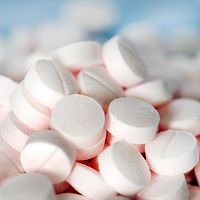Adding Drug Combination Sees Benefits in COPD Patients
Certain groups of patients with chronic obstructive pulmonary disease (COPD) may see more benefits from adding a combination of aclidinium bromide and formoterol to their existing treatment, according to research conducted by the German Institute for Quality and Efficiency in Health Care (IQWiG).

Certain groups of patients with chronic obstructive pulmonary disease (COPD) may see more benefits from adding a combination of aclidinium bromide and formoterol to their existing treatment, according to research conducted by the German Institute for Quality and Efficiency in Health Care (IQWiG).
The researchers examined whether the drug combination of aclidinium bromide and formoterol offered COPD patients an additional benefit over the traditional therapy regimen. The combination had been approved for the treatment of COPD since November 2014.
Moderate grade COPD patients were assigned the new drug combination and were compared to a long acting beta 2 sympathomimetic (like formoterol) and/ or trotropium. Grade III patients with at least two flare up episodes per year were eligible to receive additional inhaled corticosteroids.
All patients continued their ongoing treatment with prescribed corticosteroids throughout their inclusion in the study, no matter their severity or exacerbation frequency. But, the researchers only analyzed those patients treated in accordance to the Federal Joint Committee (G BA), which specified different appropriate combination therapies for each severity grade.
The study authors found there was a minor benefit for adult patients with grade II, or moderate, COPD when adding the drug combination. Adults in the grade III category with fewer than two exacerbations each year reportedly saw “considerable benefit” when the group was solely compared to the traditional therapy. The researchers were unable to determine any greater or lesser benefit for more severely ill COPD patients.
For grade III patients, the differences between the treatment groups were not statistically significant, the researchers said. They elaborated that the added benefit for grade III or grade IV COPD patients with at least two annual flare-ups was not yet understood.
When asked about their symptoms, Grade III patients reported less dyspnea while using the drug combination than when under the control intervention. But, the authors reported, the difference was too small to significantly derive a clear benefit.
For patients classified in grade II, the researchers believed there was an indication of potentially reducing the symptoms such as breathlessness, cough and sputum, and chest symptoms. For grade III patients, the researchers explained there was proof of this benefit, as well as seeing an added advantage for those patients with severe exacerbations.
“There is an indication of a minor added benefit for patients with moderate severity and proof of a considerable added benefit for patients with COPD grade III and no more than one flare up per year,” the authors concluded in a statement.